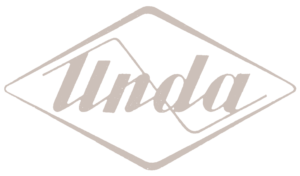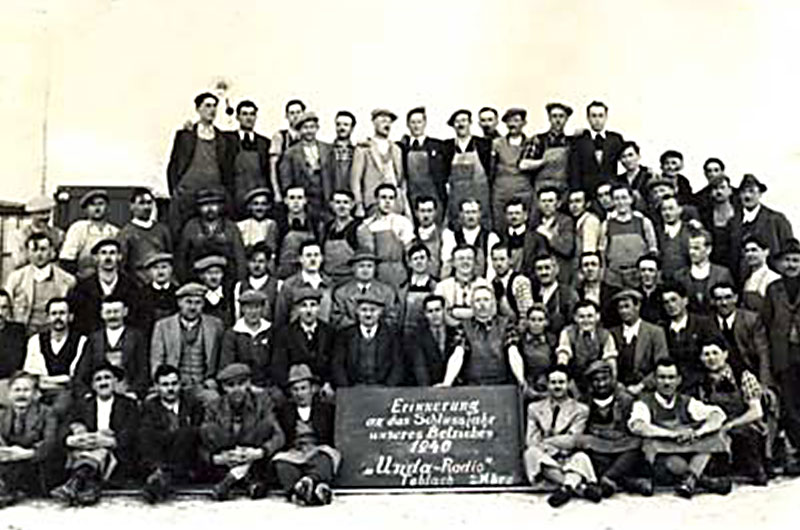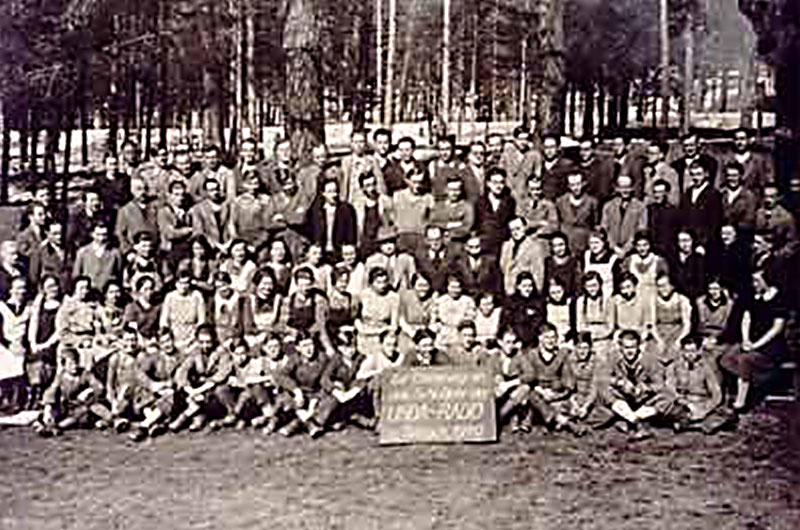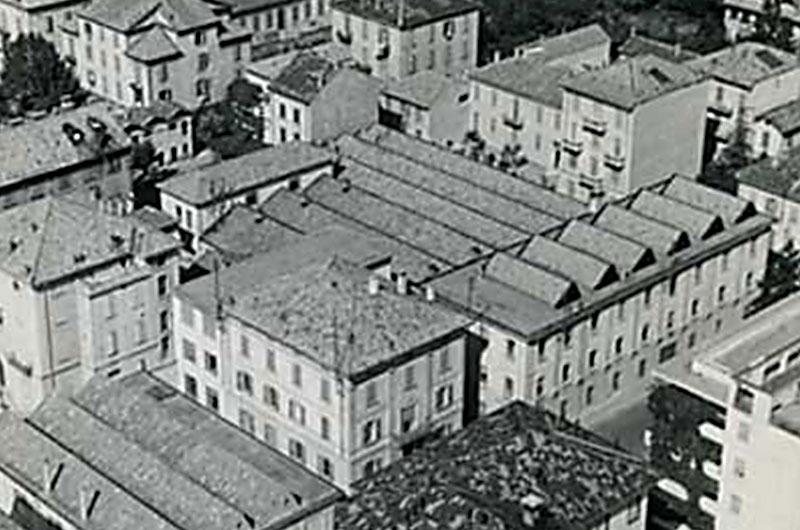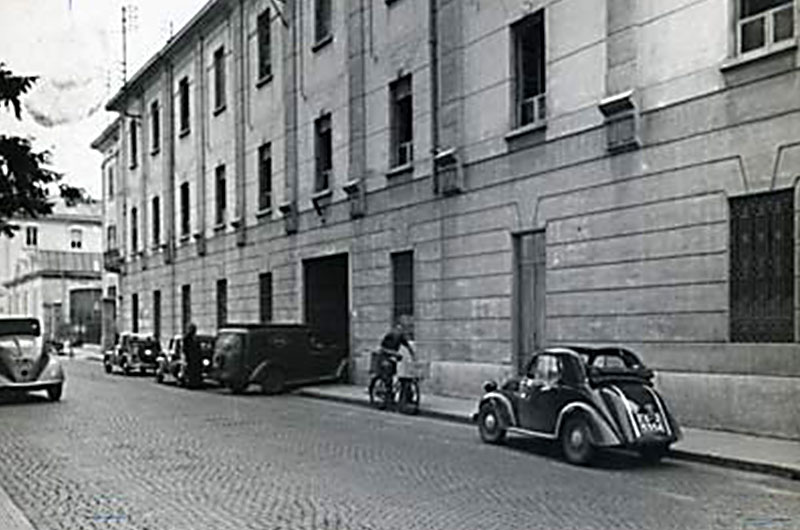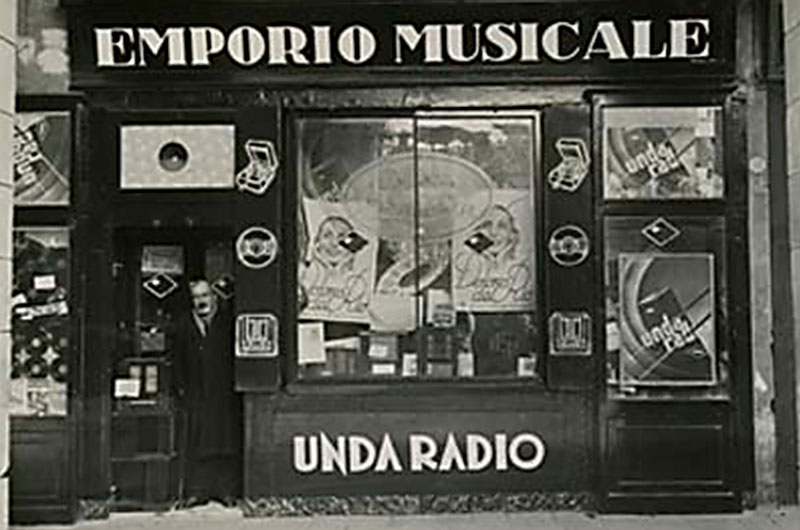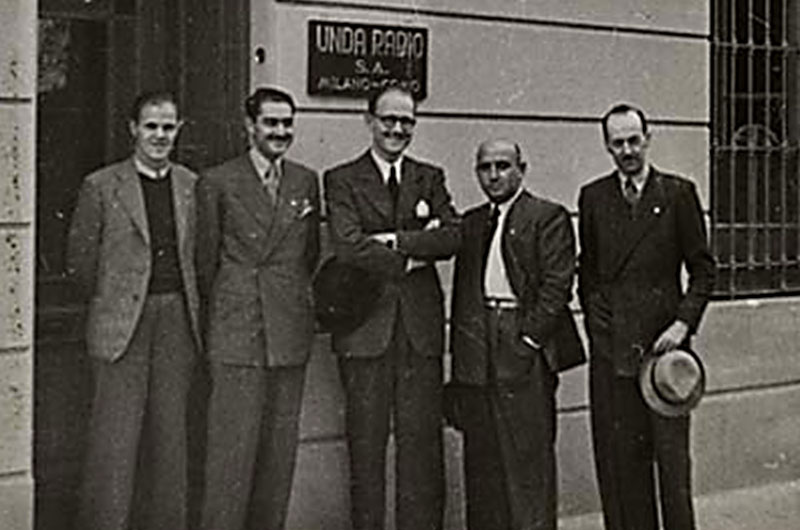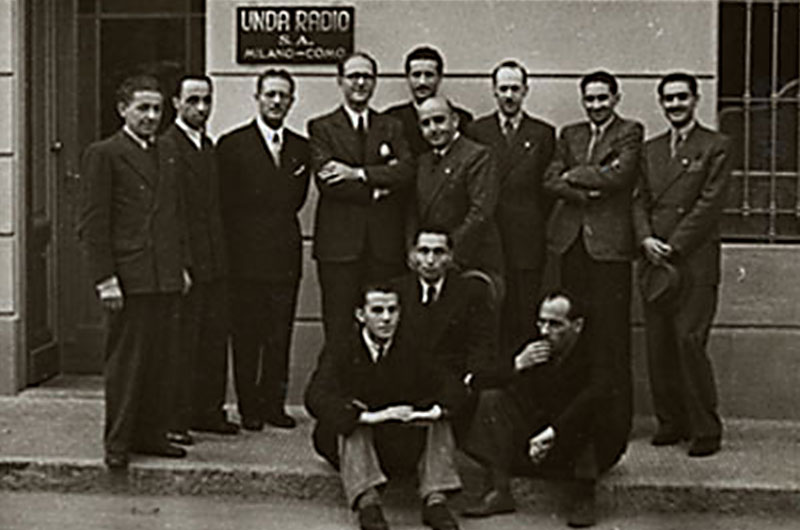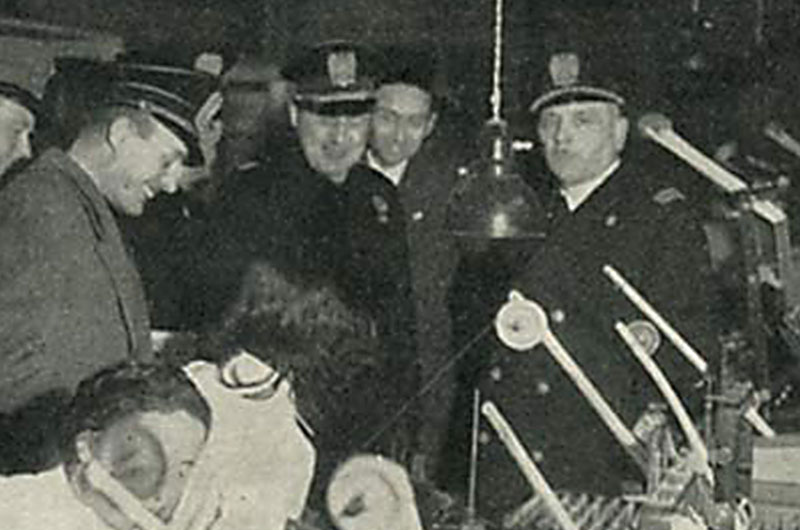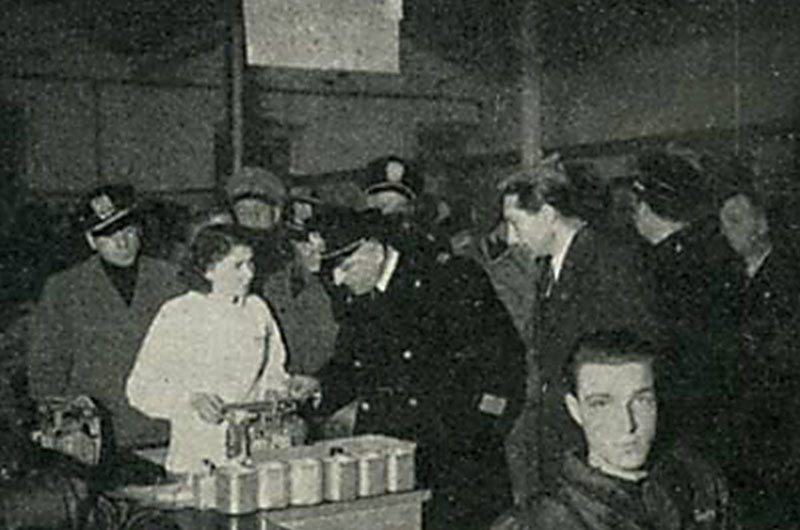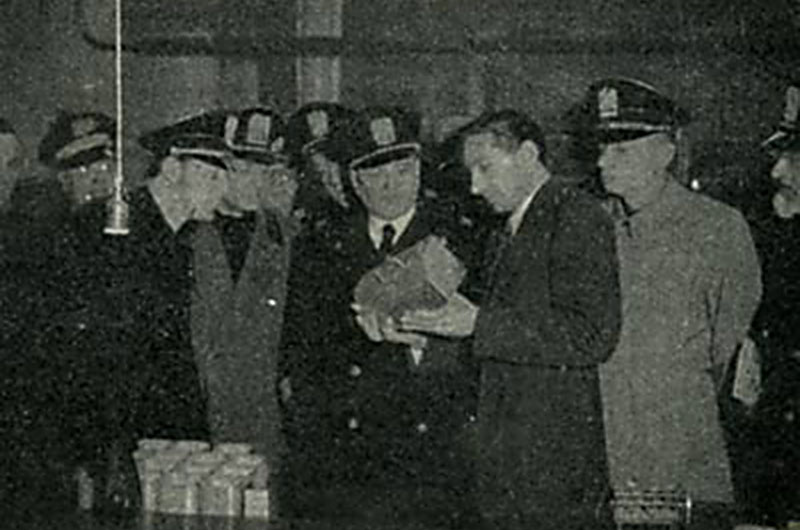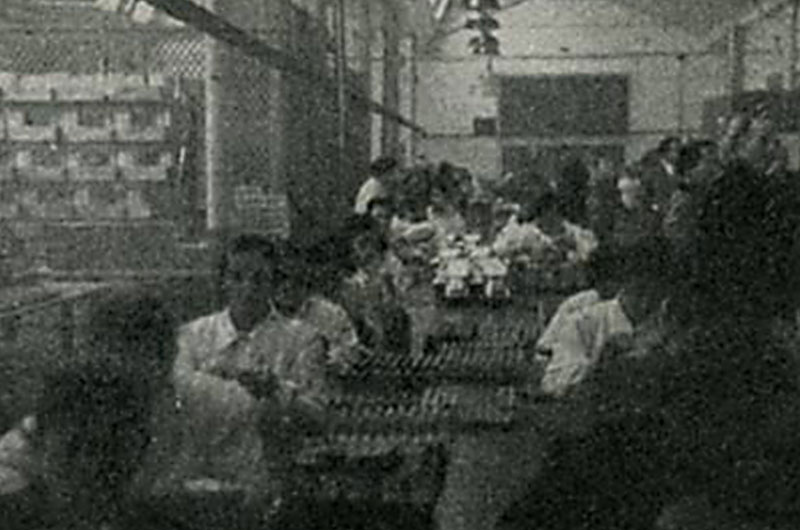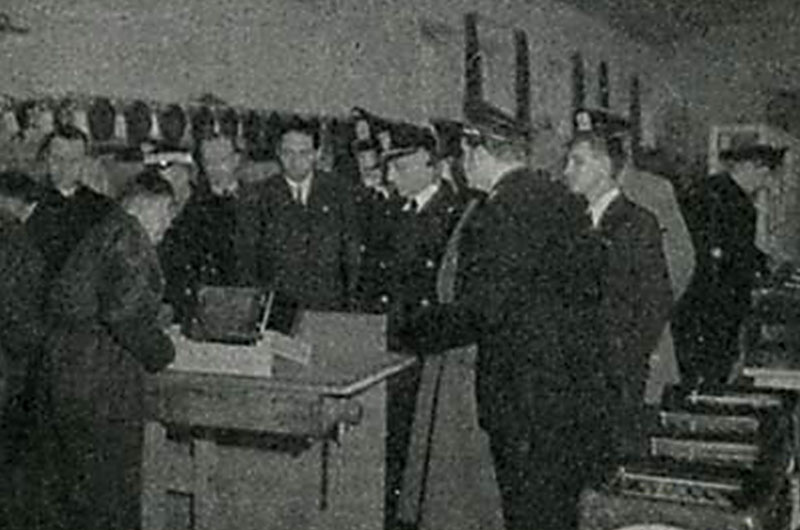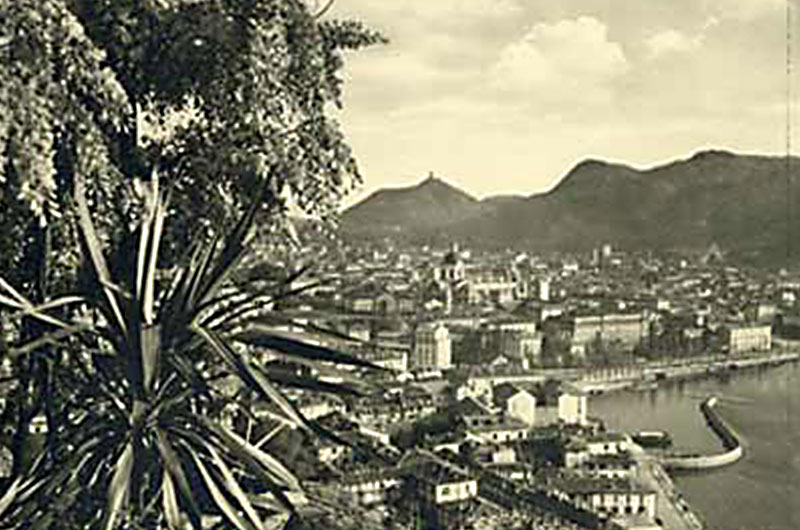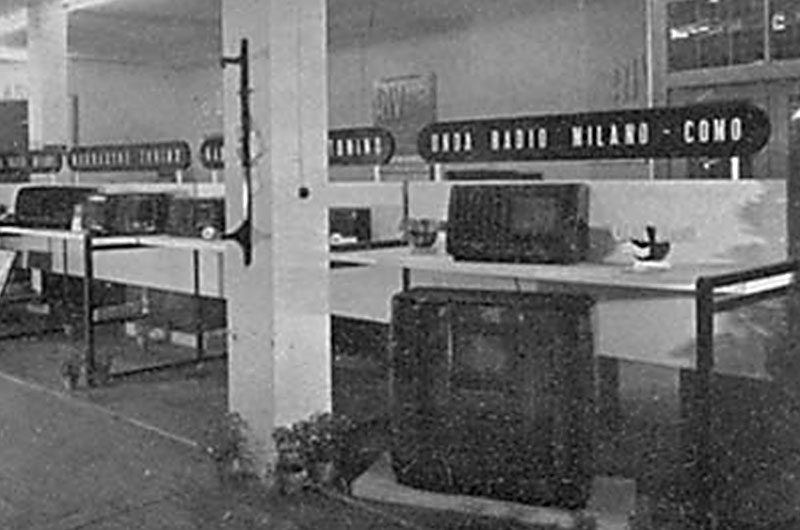Unda Radio had become a well-known concern for its continuous leadership in the radio technology field, mainly for the quality of its products and manufacturing accuracy, but also for its seriousness in business practices. In this respect, in one of the many editorials dedicated to the Company, the journal Radio Industria dated September 2, 1936, stated the following: “…on the market the Unda radio sets are considered – super super – to emphasize their quality superiority. This reputation has been earned by years of seriousness in the complex production and sales organization.”
At the Ninth National Radio Trade Show Unda came out with the new series “Super Quadri Unda” and Radio Balilla, “the radio for the people” , the second radio model built as per Ente Radio Rurale specifications and under the watchful eye of the Communication Ministry. This was to fulfil the ambitious fascist party project with its slogan: “an affordable radio for everyone”. While the Radiorurale was intended for schools, military associations, parishes, workers’ clubs, agricultural labour unions, some public offices, the goal for Radio Balilla was to be present in every home. A competition to define the Radio Balilla prototype was published. Sixteen companies participated. About forty projects were presented to establish the technical and aesthetic specifications. Only seven companies were chosen, among which Unda Radio.
In 1937 Unda became a joint stock Company, and its capital was raised to Lit. 1,200,000. Meanwhile the workforce also gradually increased at the Dobbiaco factory, to reach about 200 skilled workers, mostly local residents and residents of the nearby valleys. Thus the Company became important socially and economically for the population of the Val Pusteria. A carpentry division to build the cabinets was established, thereby increasing the self-sufficiency of the Company.
In the field of professional radios, Unda designed and built receiving and transmitting instruments, to make communication between mountain shelters and valley stations possible. Many of these instruments were placed in the shelters of the Dolomites, where they were also used to transmit weather data useful to the Italian Royal Air Force.
In the early months of 1939, radio sets were being planned and produced for the series “Sex Unda”, another big milestone for the Company at Dobbiaco. Its goal was to build a class product able to satisfy, through high technical standards, all the requirements for perfect reception in any type of weather. The series consisted of models 761, 762 and 961. The 761 equipped with seven tubes (EF8-6A7G-6C5G-6Q7G-EBF2-6L6-80G) had a 7W output, the 762 was a radio-phonograph version of the previous, but built as a console cabinet. The 961 was an imposing nine-tube console radio-phonograph, with the same specifications as the 761 but with two additional tubes 6L6G and a gigantic 320mm. loud-speaker with a 16W output power.
This series could receive six wave bands (LW-MW and four SWs). It was equipped with a pre-selected, ten push-buttons automatic tuning system, achieved purely by hi-precision mechanics. This system allowed tuning into ten radio stations to choose at will in the range of medium-waves’ band. This automatic tuning system was connected to a manual tuning system, which could be engaged or interrupted by an electromagnetic coupling. In addition, an appropriate circuit interrupted reception during automatic tuning. An additional device allowed for noise-free automatic tuning.
These radio sets were of great prestige offered on the market at competitive prices, as customary. The 961 model was priced at Lit 5,400, while a similar model, the Phonola 1010 for example, cost Lit. 7,200. Unda Radio took pride at the time, among other things, to have presented the Duce with a Sex Unda 761, during an audience granted to the director of the company.
In the spring of 1940, Unda Radio relocated to Como (Lombardy), in Via Mentana 20, as a result of Italian-German agreements signed on June 23, 1939 at Nazi Headquarters in Berlin. These agreements gave the opportunity to the population of South Tyrol to opt, before December 31, 1939, whether to remain in Fascist Italy and lose its ethnic and linguistic identity and to swear allegiance to the Duce, or emigrate permanently to Nazi Germany. Unda Radio chose to remain in Italy and moved to Como, the native town of Alessandro Volta, also due to the fact that most workers were forced to opt for Germany.
In spite of the general difficulties (to note the declaration of war on June 10, 1940 by the Duce from the balcony of Palazzo Venezia), added to relocation and replacement problems of the skilled work force, Unda Radio officially reopenedits new factory on December 14, 1940, in the presence of the authorities, Como’s VIPs, Fascist Party officials, the local press and representatives of the industry. On that occasion the authorities, under the guidance of Max Glauber, the Amonn brothers and Theddy Mohwinckel, could visit the various departments in action, going through all the phases of production, from the planning stages to the final quality control.
In the new factory a workmen’s club and a canteen were established. On the inauguration day, Mrs. Glauber, godmother of the event, was given a bouquet of orchids by a worker.
The old building which housed Unda Radio was built at the end of the XIX century for a textile mill which produced velvet. After bankruptcy, the building was acquired by Giampietro Dell’Oca, who leased it to Unda Radio. Soon after the relocation, the company’s capital was increased to Lit. 2,900,000.
Meanwhile, at the IX National Radio Trade Show, which took place in September 1937, Ente Radio Rurale launched a new receiver for the people, “Radio Roma”, replacing “Radio Balilla”. Unda never produced Radio Roma, nor participated in the competition for the prototype.
Unda, at the XII National Radio Trade Show, held at Permanente from September 14th to September 22nd, 1940 (year of relocation), was going at full speed by offer-ing five new models of the series “Quadri Unda”: the 541, 534, 542, 544 and 545 and five models of the “Sex Unda” series: 761, 762, 763, 764 and 961.
At the XIII National Radio Trade Show in 1941, the last of these important exhibits suspended by the war, Unda came out for the first time with three new models of the series “Penta Unda”, specifically the 651, 652 and 653. The first two were 6-tube (6A8-6K7-6K7-6Q7-6V6-5Y3) sets, differing only in the cabinet finish, and the 653 was a console radio-phonograph.
By now war events had paralyzed the civilian radio production in favour of military production, such as the RB 30, (a radio transmitter cabinet installed on Italian fighter planes, followed immediately by the RB 30 T bis, both designed by Allocchio Bacchini, but built, with some modification, by Unda as well) and receiver RR 2 and transmitter TPR 20, designed and initially produced by Marelli for the navy.
A press release, which appeared in the 101/ 102 issue of Radio Industria in 1943, informed that Unda was beginning the production of measuring instruments, specifically a cathode ray oscilloscope, the F. 125 and a wave-meter, the F. 122, designed by Fausto Bruno, the F standing for the first name of the designer.
In spite of the war, in 1944 the Company issued model “Tri Unda” 53/4 and in 1945 two amplifiers, P. 5/1, a 35W output model, and P. 5/2 a portable 15W output model. Also in 1945, the first model of the series “Octa Unda” came out: the 98/1, a 9 tube superhet, designed to receive 8 wave lengths (LW-MW and six within SW and VSW) and the “Quadri Unda” 54/1, a 5 tube superhet (ECH4-6K7G-6Q7G-6V6G-5Y3G) for the reception of medium waves and three short wave bands.
1936-1945 Styling and consumerism
The 1929 economic crisis in America is overcome by the new concept of styling, which meant giving objects a specific image through styling which changed every year. Thus consumerism is born as a model for capitalistic economic development. The world of design, which will always snob styling and consumerism, continues to express form through materials. Objects such as the telephone, the adding machine and the automobile assume their specific shape.
The Radio and Design
In order to spread political propaganda and the ideology of the regime, the Italian Government encourages the production and the distribution of radio receivers to be sold at “popular” prices, with design details symbolizing the political regime. The radio, produced in great quantities, becomes more compact and its vertical style converts to mixed styles. The tuning dial with the name of the broadcasting station is introduced substituting the number system, typical of the previous decade.
